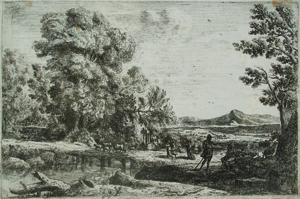January 22-March 17, 2013
Over the past thirty plus years that I have been at the Benton, many works of art have entered its collections, and the nature of these works has significantly changed. Geographically, the once predominantly European and American emphasis had by the mid-1990s broadened to include Asian, Latin American, and African art. Chronologically, the collections that once spanned only the period from the 15th to mid-20th centuries today extend to the present. The only media represented in the 1970s in significant numbers were painting, sculpture, prints, and drawings; today a fifth major area of collecting is photography. Many of these works have come in as gifts, but the growth since 1980s in the number of endowments specifically designated for purchasing art has been a major factor.
The selection of works for this exhibition is my choice. They represent my eye, which is biased towards European and 19th-century American art. There are prints, drawings, and photographs with only an occasional painting, a preference that reflects my own scholarly and collecting interests. Some names are familiarRembrandt, Drer, Homer, and Boucher; others like Nanteuil, Vernet, Roth, and Zingg perhaps not so. However, each work is a part of the collections for a reason, and invariably that reason is pedagogical. Nonetheless, each work of art also has a role to play as visual pleasure, intellectual stimulation, historical artifact, and perhaps moral and ethical enlightenment. For me, each work represents a specific moment because I bought it or because I knew the collector from whom it came. But institutional collecting is not about the individual, and what I would ultimately hope is that each work might not only play a role in future exhibitions, but always be there to excite a student’s interest in things historical, social, cultural, and artistic. After all, isn’t that the best of reasons for working in a university art museum?Thomas P. Bruhn, Interim Director and Curator.
